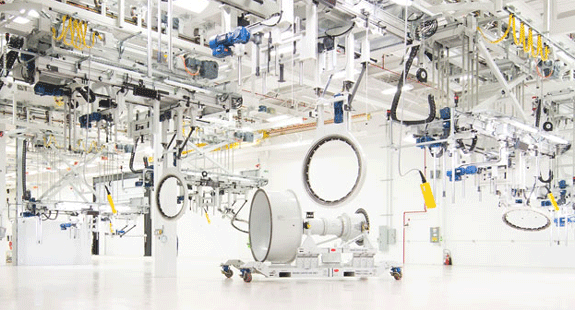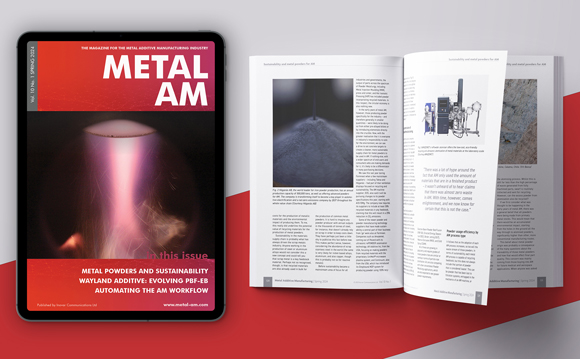Pratt & Whitney to deliver first entry-into-service jet engine parts produced by Additive Manufacturing
April 8, 2015

Pratt & Whitney has accomplished another first by building its first PurePower® engine on its new automated horizontal assembly lines in Middletown, Connecticut, and West Palm Beach, Florida, USA.
Pratt & Whitney has announced that when it delivers its first production PurePower® PW1500G engines to Bombardier this year, the engines will be the first ever to feature entry-into-service jet engine parts produced using Additive Manufacturing.
While Pratt & Whitney has produced more than 100,000 prototype parts using AM over the past 25 years the company will be the first to use Additive Manufacturing technology to produce compressor stators and synch ring brackets for the production engines.
“Pratt & Whitney has been working with Additive Manufacturing since the 1980s, and we are looking forward to our upcoming milestone, when the first production PurePower PW1500G engines with parts produced through Additive Manufacturing will be delivered,” stated Tom Prete, Pratt & Whitney’s Engineering Vice President.
“We are a vertically integrated Additive Manufacturing producer with our own metal powder source and the printers necessary to create parts using this innovative technology. As a technology leader, we are intrigued by the potential of Additive Manufacturing to support our suite of technologies and benefits to customers and the global aerospace industry,” added Prete.
In production tests, Pratt & Whitney has realized up to 15 months lead-time savings compared to conventional manufacturing processes and up to 50 percent weight reduction in a single part. The PurePower engine family parts will be the first product produced using 3D printing powder bed additive manufacturing.
Related manufacturing technologies that will be used in the PurePower engine production include Metal Injection Moulding, Electron Beam Melt and Laser Powder Bed Fusion (including Direct Metal Laser Sintering).
“Additive Manufacturing offers significant benefits to the production of jet engines,” stated Lynn Gambill, Chief Engineer, Manufacturing Engineering and Global Services at Pratt & Whitney. “We have engine tested components produced through Additive Manufacturing in the PW1500G.”
Pratt & Whitney and the University of Connecticut are also collaborating to advance Additive Manufacturing research and development. The Pratt & Whitney Additive Manufacturing Innovation Center is the first of its kind in the Northeast region to work with metal powder bed technologies.
With more than $4.5 million invested, the centre will further advance Pratt & Whitney’s AM capabilities, while providing educational opportunities for the next generation of manufacturing engineers.
















